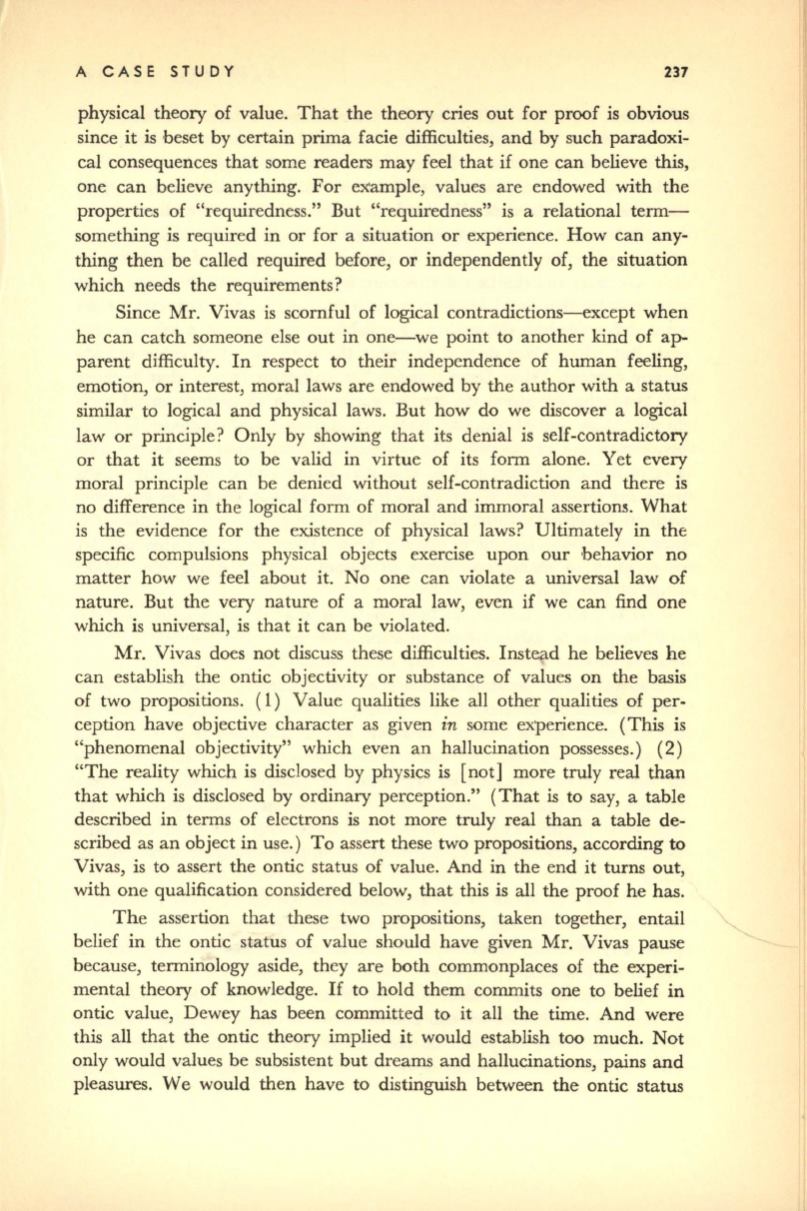
A CASE STUDY
237
physical theory of value. That the theory cries out for proof is obvious
since it is beset by certain prima facie difficulties, and by such paradoxi–
cal consequences that some readers may feel that if one can believe
this,
one can believe anything. For eX'ample, values are endowed with the
properties of "requiredness." But "requiredness" is a relational term–
something is required in or for a situation or experience. How can any–
thing then be called required before, or independently of, the situation
which needs the requirements?
Since Mr. Vivas is scornful of logical contradictions-except when
he can catch someone else out in one-we point to another kind of ap–
parent difficulty. In respect to their independence of human feeling,
emotion, or interest, moral laws are endowed by the author with a status
similar to logical and physical laws. But how do we discover a logical
law or principle? Only by showing that its denial is self-contradictory
or that it seems to be valid in virtue of its form alone. Yet every
moral principle can be denied without self-contradiction and there is
no difference in the logical form of moral and immoral assertions. What
is the evidence for the existence of physical laws? Ultimately in the
specific compulsions physical objects exercise upon our behavior no
matter how we feel about it. No one can violate a universal law of
nature. But the very nature of a moral law, even if we can find one
which is universal, is that it can be violated.
Mr. Vivas does not discuss these difficulties. Instead he believes he
can establish the ontic objectivity or substance of values on the basis
of two propositions. (1) Value qualities like all other qualities of per–
ception have objective character as given
in
some experience. (This is
"phenomenal objectivity" which even an hallucination possesses.) (2)
"The reality which is disclosed by physics is [not] more truly real than
that which is disclosed by ordinary perception." (That is to say, a table
described in terms of electrons is not more truly real than a table de–
scribed as an object in use.) To assert these two propositions, according to
Vivas, is to assert the ontic status of value. And in the end it turns out,
with one qualification considered below, that this is all the proof he has.
The assertion that these two propositions, taken together, entail
belief in the ontic status of value should have given Mr. Vivas pause
because, terminology aside, they are both commonplaces of the experi–
mental theory of knowledge.
If
to hold them commits one to belief in
ontic value, Dewey
has
been committed to it all the time. And were
this all that the ontic theory implied
it
would establish too much. Not
only would values be subsistent but dreams and hallucinations, pains and
pleasures. We would then have to distinguish between the ontic status


